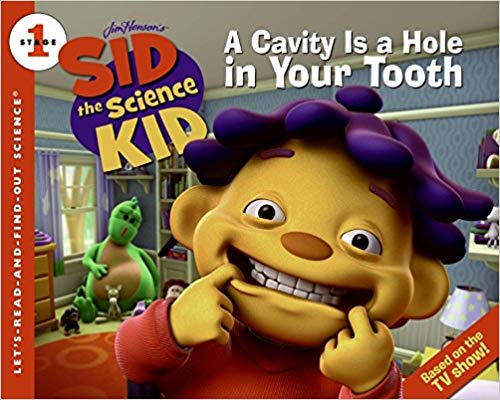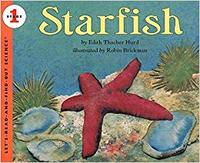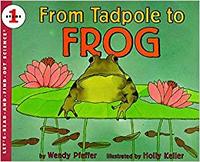Sid the Science Kid: A Cavity Is a Hole in Your Tooth
分級讀本/橋梁書
Sid the Science Kid: A Cavity Is a Hole in Your Tooth
書籍資訊
| 適讀年齡 | 4 - 8 |
| 適合年級 | P - 1 |
| 字數 | 1,146 字 |
| Grade level equivalent | |
| AR level | 3.6 |
| F&p/guided reading level | |
| Lexile | |
| DRA level | |
| 出版社 | HarperCollins |
| 出版日期 | March 2010 |
Let's-Read-and-Find-Out About TeethHave you ever wondered what would happen if you never brushed your teeth? Why do you need your teeth to be strong and hard? Read and find out all about teeth with Sid the Science Kid!
同系列的其他書籍

What's It Like to Be a Fish?
Could you live underwater?You can't breathe underwater, but a fish can. You can't eat underwater, but a fish does it every day. A fish's body is perfectly designed for life in water, just as your body is perfect for living on land. Read and find out how a fish's sleek body, fins, scales, and gills keep him in the swim! Then read on to learn how to set up your own goldfish bowl.
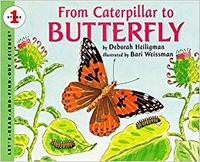
From Caterpillar to Butterfly
A caterpillar comes to school in a jar and the class watches the caterpillar each day as it grows and changes. Soon, it disappears into a hard shell called a chrysalis. Where did it go? This is a perfect beginner's guide to the mystery of metamorphosis. Named as a NSTA/CBC Outstanding Science Trade Books for Children, this book explains the life cycle from caterpillar to butterfly with easy-to-follow prose from Deborah Heiligman and warm, colorful illustrations from Bari Weissman. This is a Stage 1 Let's-Read-and-Find-Out, which means the book explains simple science concepts for preschoolers and kindergarteners. Let's-Read-And-Find-Out is the winner of the American Association for the Advancement of Science/Subaru Science Books & Films Prize for Outstanding Science Series. Supports the Common Core Learning Standards and Next Generation Science Standards
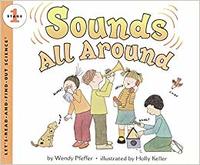
Sounds All Around
Sounds are all around us.Clap your hands, snap your fingers: You're making sounds. Read and find out how people and animals use different kinds of sounds to communicate.

Animals In Winter
Describes the many different ways animals cope with winter, including migration, hibernation, and food storage.
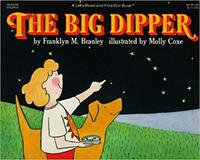
The Big Dipper
Explains basic facts about the Big Dipper, including which stars make up the constellation, how its position changes in the sky, and how it points to the North Star.
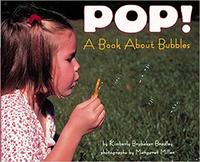
Pop! A Book About Bubbles
Why are soap bubbles always round? Why do they always go POP? Simple, clear text explains the basic science behind an activity every child loves.

My Feet
Brief text and illustrations describe the various parts of the foot and all the things feet help us to do.
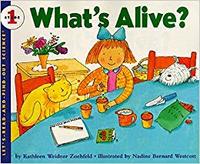
What's Alive?
Looks at the qualities people have in common with other living things, including cats, trees, and birds.
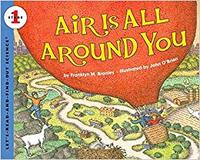
Air Is All Around You
Describes the various properties of air and shows how to prove that air takes up space and that there is air dissolved in water.
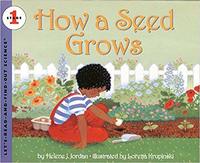
How a Seed Grows
Once, a long time ago, the oak tree in your backyard could have fit your pocket! How can a little acorn grow so big? This book shares the secret of seeds. With the right combination of water, sun, and soil a seed will send roots down into the ground and shoot leaves up into the sunlight. Seeds can grow into flowers or vegetables or even trees. Look inside to learn the simple steps for turning a packet of seeds into a garden.
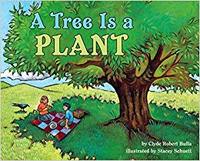
A Tree Is a Plant
A tree is the biggest plant that grows. Trees can live for a very long time, and they are alive all year long, even when they look dead in winter. Clyde Robert Bulla's accessible text and Stacey Schuett's lush, accurate illustrations follow a tree's continuous life cycle through spring, summer, winter, and fall.This is a Stage 1 Let's-Read-and-Find-Out, which means the book explains simple science concepts for preschoolers and kindergarteners. Let's-Read-And-Find-Out is the winner of the American Association for the Advancement of Science/Subaru Science Books & Films Prize for Outstanding Science Series.Supports the Common Core Learning Standards and Next Generation Science Standards.
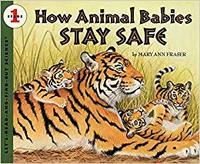
How Animal Babies Stay Safe
How do animal babies survive in a dangerous world? Activities encourage young readers to think about the ways they themselves stay safe, and teach them what to do if they encounter a baby animal in the wild.

Bugs Are Insects
Is a spider an insect? Is a ladybug a bug? Lean how to tell what is an insect and what isn't, and discover the fascinating world of the tiny creatures who live in your own backyard.

From Seed to Pumpkin
Pumpkins can be baked in a pie, carved into jack-o'-lanterns, and roasted for a healthy snack. But how does a tiny seed turn into a big pumpkin? With clear text and detailed, colorful illustrations, this book explains what a pumpkin seed needs to help it grow! This book also includes delicious pumpkin recipes and easy experiments to do with pumpkin seeds. This is a Stage 1 Lets-Read-and-Find-Out, which means the book explains simple science concepts for preschoolers and kindergarteners. Lets-Read-And-Find-Out is the winner of the American Association for the Advancement of Science/Subaru Science Books & Films Prize for Outstanding Science Series. Supports the Common Core Learning Standards and Next Generation Science Standards
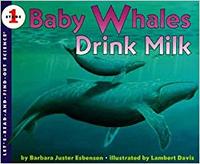
Baby Whales Drink Milk
The title epitomizes Esbensens creative presentation of an important concept: how whales differ from the fish they seem to resemble and share characteristics with other mammals. An excellent addition to the Lets-Read-and-Find-Out series.K. Introduces a full range of information about whale anatomy, development, and behavior. Esbensens simple, informative text keeps its young audience clearly in view.BL.
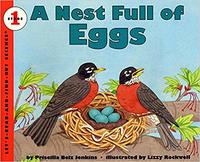
A Nest Full of Eggs
What's inside that pretty blue egg?A baby bird is growing inside that egg. Slowly the bird develops, until one day it cracks through the shell. Safe inside the nest, under the care of its parents, the chick grows stronger. Soon it will learn how to fly and take care of itself. By next spring it will be ready to build its own nest and raise chicks of its own.
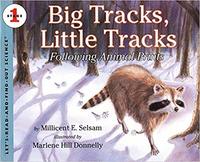
Big Tracks, Little Tracks
Keeping a sharp eye out for clues like animal tracks and odors can help people identify the animals that have passed through an area.

Dinosaurs Big and Small
Some dinosaurs were big. How big? As long as four school buses in a row, as heavy as sixteen elephants. Some dinosaurs were small. How small? Read and find out!
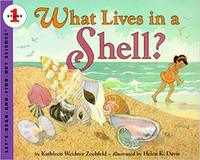
What Lives in a Shell?
What makes a shell like a house?A house is a home for you, a nest is a home for a bird, and a cave is a home for a bear. But for some animals a shell is a home. Snails and turtles and crabs and clams all have shells that act as their homes and protect them from harm. In this book you'll learn all about these and other crustaceous creatures, for whom a shell is just the right sort of home.
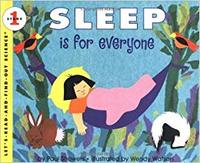
Sleep Is For Everyone
Discusses the importance of sleep and what happens to our brains and bodies during slumber.
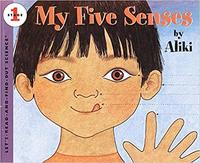
My Five Senses
Explains the five ways in which a small boy can experience and enjoy the world around him

Sid the Science Kid: Everybody, Move Your Feet!
Let's-Read-and-Find-Out about ExerciseWhat would happen if you did nothing but watch TV all day? Why is it important to get up and play? Read and find out all about exercise with Sid the Science Kid!Introduce basic science concepts to young children and help satisfy their curiosity about how the world works.

Sid the Science Kid: Why Can't I Have Cake for Dinner?
Have you ever wondered what would happen if you ate cake all the time? Why do you need to eat a lot of different kinds of food? Read and find out all about nutrition with Sid the Science Kid!

Snow Is Falling
Describes snow's physical qualities and how quantities of it can be fun as well as dangerous.
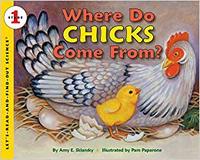
Where Do Chicks Come From?
Describes what happens day-by-day for the three weeks from the time a hen lays an egg until the baby chick hatches. Let's-Read-And-Find-Out Science Stage 1.
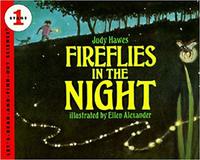
Fireflies In The Night
Describes how and why fireflies make their light, how to catch and handle them, and several uses for firefly light.

How Many Teeth?
Introduces teeth, describing how many we have at various stages of life, why they fall out, and what they do.
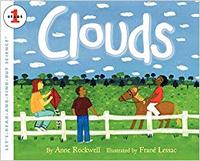
Clouds
Do you ever wake up and wonder what the weather will be? Instead of turning on the TV to find out, you can just look out your window at the clouds. How do you know what type of clouds can forecast a change of weather? Read and find out.

Where Are The Night Animals?
Describes various nocturnal animals--including the opossum, barn owl, coyote, brown bat, and tree frog--and their nighttime activities, and teaches new readers how to look for night animals with a special activities section.
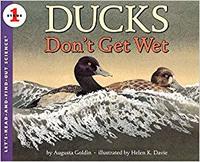
Ducks Don't Get Wet
Describes the behavior of different kinds of ducks and, in particular, discusses how all ducks use preening to keep their feathers dry.
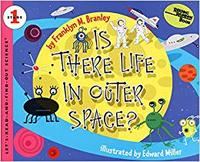
Is There Life in Outer Space?
Life In Outer SpaceBears and birds, people and planets -- many things live on planet Earth. But do they live anywhere else? For a long time people have wondered about that. Maybe you have, too. Read and find out how scientists search for signs of life in outer space.
其他您可能會有興趣的書籍
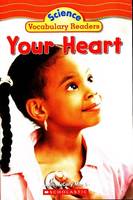
Your Heart
Early Elementary Reader that teaches Science and enhances Literacy Skills at the same time!
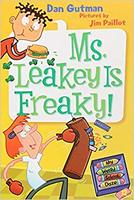
Ms. Leakey Is Freaky!
Ella Mentry School hires a health teacher who tries to force the students to eat healthy foods and exercise, whether they want to or not.
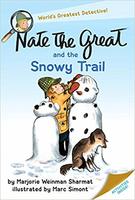
Nate The Great And The Snowy Trail
Rosamond要送Nate生日禮物,但這個禮物卻在Rosamond前往Nate家的路上不見了。因為是個生日禮物,Rosamond不告訴Nate到底是個什麼東西,所以Nate這次的案件是要找出不知是什麼東西的東西,這樣該從何找起呢? ------ Getting all the facts, asking the right questions, and narrowing down the suspects, Nate the Great and his dog Sludge solve a variety of mysteries.
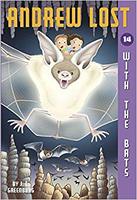
Andrew Lost with the Bats
Thanks to an invention mishap Andrew, Judy, and Thudd have been shrunk down to the size of bugs. Thats a serious problem when they get lost in a deep, dark, and bat-filled cave. Bats love to eat bugs! Will Andrew, Judy, and Thudd find a light at the end of the cave? Or is that really a glowing insect just waiting to eat them?

The Best Seat in Second Grade
Sam's favorite thing about second grade is the class pet, a hamster named George Washington, so when the class goes on a field trip to a science museum, Sam cannot resist bringing George along.

What's It Like to Be a Fish?
Could you live underwater?You can't breathe underwater, but a fish can. You can't eat underwater, but a fish does it every day. A fish's body is perfectly designed for life in water, just as your body is perfect for living on land. Read and find out how a fish's sleek body, fins, scales, and gills keep him in the swim! Then read on to learn how to set up your own goldfish bowl.
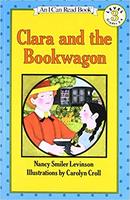
Clara and the bookwagon
Clara's dream of enriching her rough life on the family farm is fulfilled when a horse-drawn book wagon visits with the country's first traveling library.
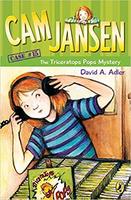
Cam Jansen and the Triceratops Pops Mystery
What wrongdoer is any match for Cam Jansen, the girl with the amazing photographic memory? Jennifer "Cam" (short for camera) Jansen and her friend Eric use her remarkable gift to track down clues and solve thrilling and puzzling mysteries.
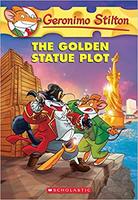
The Golden Statue Plot
Rancid rat hairs, the cat pirates are coming to town! They're planning on stealing New Mouse City's Statue of Liberty and taking it back to Cat Island. They think it's completely made of gold! My friends and I are determined to protect our city's precious symbol. But can we stop these fearsome felines?

Aunt Eater loves a mystery
Aunt Eater loves mystery stories so much that she sees mysterious adventures wherever she looks.

The Fly on the Ceiling
A story about how the very messy French philosopher, Rene Descartes, invented an ingenious way to keep track of his possessions.
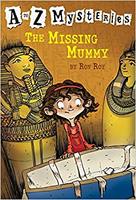
The Missing Mummy
Dink, Josh, and Ruth Rose are excited about the new Egyptian exhibit. But then the mummy is stolen and the tomb robbed of its treasure can they unravel the mystery and return the mummy to its rightful resting place?
